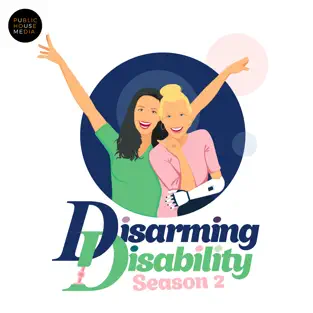
What is Disability Pride Month?
Though it shares part of its name with LGBTQIA+ Pride Month, Disability Pride Month focuses on celebrating and honoring the achievements, experiences, history, and struggles of the disability community.
Disability Pride Month is celebrated in July to acknowledge the passing of the Americans with Disabilities Act(ADA) in July 1990.
-
March 12, 1990:
-
1,000 people marched from the White House to the U.S. Capitol to demand that Congress pass the Americans with Disabilities Act.
-
During this, 60 activists demonstrated the inaccessibility of public spaces by getting out of their wheelchairs or setting aside their mobility aids and crawling up the Capitol steps.
-
Eventually, 104 activists were arrested for unlawful demonstration.
-
- July 26, 1990:
- President George H.W. Bush signed the Americans with Disabilities Act into law.*
*Jeff Markowitz/ap Photo
Disability Pride Flag History
In 2019, Ann Magil created the Disability Pride Flag, which is separate from the Disability Flag that was created in 2017 by Eros Recio.

The colors of the Disability Flag (2017) are meant to represent the three medals at the Paralympic Games and the overcoming of obstacles of the event.
The Disability Pride Flag (2019) has five different colors representing an aspect of disability or impairment. The background color and its lightning bolt shape also have different representations.
- The Black Background: Represents people who have died due to not only their illness, but also negligence, intolerance, and suicide.
- The Lightning Bolt: Represents the lives that many disabled people repeatedly have to adapt themselves or their physical routes to function in an inaccessible society.
- Blue: Represents mental illness.
- Yellow: Represents cognitive and intellectual disabilities.
- Green: Represents sensory perception disabilities.
- Red: Represents physical disabilities.*
(New) Disability Pride Flag
After two years of the Disability Pride Flag, members of the Disability Community raised concerns that the flag, specifically the brightened colors and zigzag designs, worsened symptoms for individuals with visually triggered disabilities, including seizure and migraine disorders.
In 2021, Magill remade the flag featuring a stripe across and muted colors.

Similar to the Flag of 2019, each color and symbol on the Disability Pride Flag represents different aspects of the disability community and experience.
- Black Background: Represents victims of ableist violence and abuse.
- Diagonal Band: Represents "A cut" through barriers that separate the disability community and society.
- Red Stripe: Physical disabilities.
- Gold Stripe: Neurodivergence.
- White Stripe: Invisible and undiagnosed disabilities.
- Blue Stripe: Psychiatric disabilities.
- Green Stripe: Sensory disabilities.*










